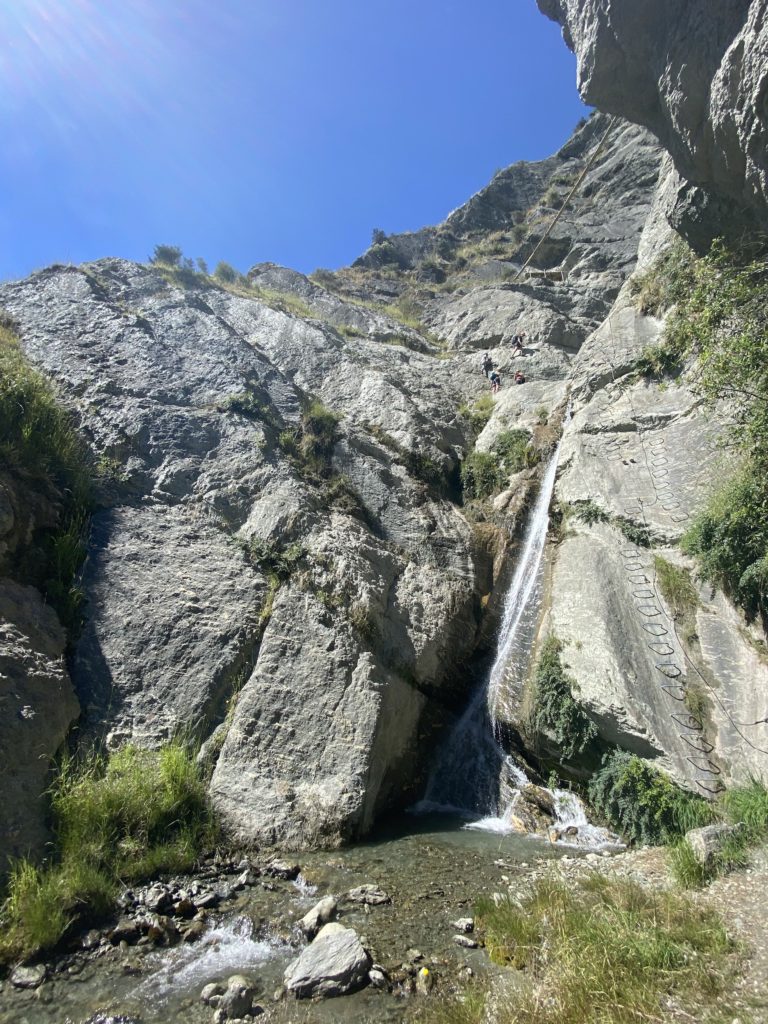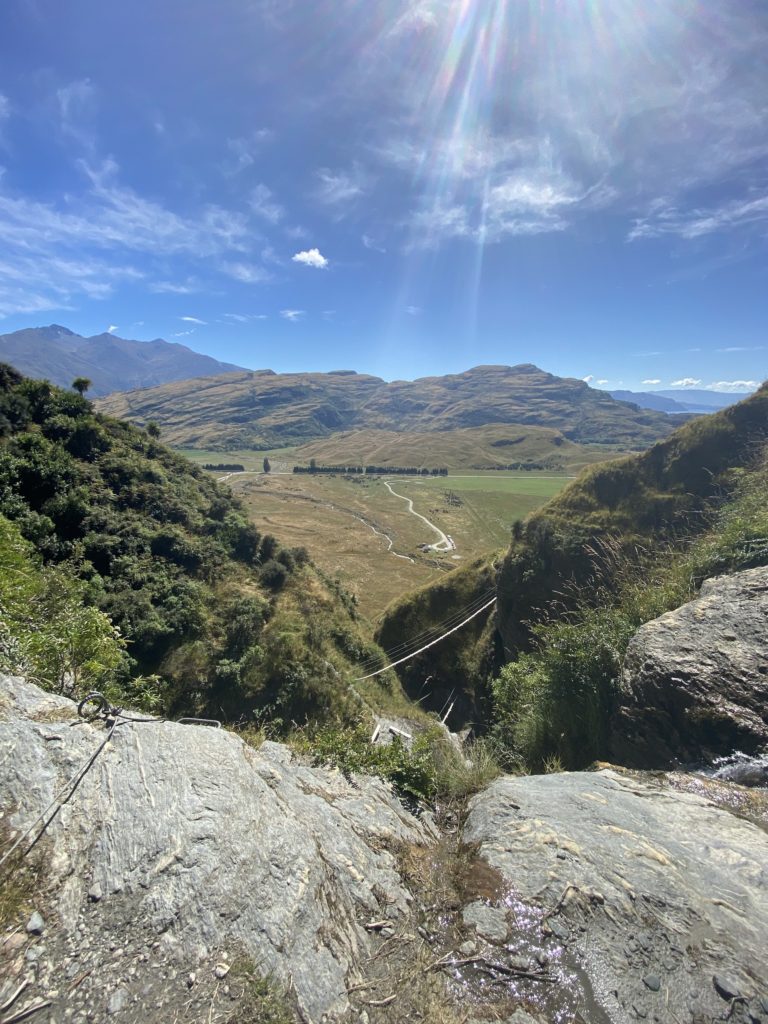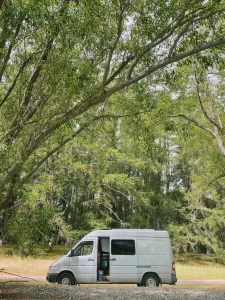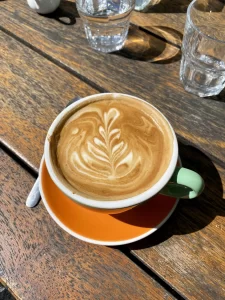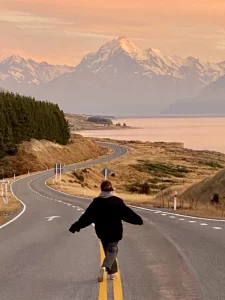Alliteration, baby! As an amateur hiking enthusiast, I’ve been wanting to do a via ferrata for a long time. I hopped at the chance to sign up after learning that one exists in Wanaka. This post will explain a little bit more about what a via ferrata is and how our experience at the via ferrata in Wanaka went.
Disclosure: Some of the links below are affiliate links. When you purchase through links on my site, I may make a small commission (at no extra cost to you!).
What is a via ferrata?
A via ferrata (Italian for “iron path” or “iron way”) is essentially a climbing route that uses steel rungs, cables, bridges, and ladders to ascend otherwise difficult-to-climb mountains. These types of routes became popular in the Dolomite mountains of Italy during the First World War. They were originally created in order to aid the movement of troops. By attaching steel rungs and ladders to the mountainsides, the soldiers were able to move about more easily in high altitudes and difficult conditions.
Nowadays, many private companies are constructing via ferratas all over the world just for fun. There are over 400 in Italy alone, with lots more around the rest of Europe as well.

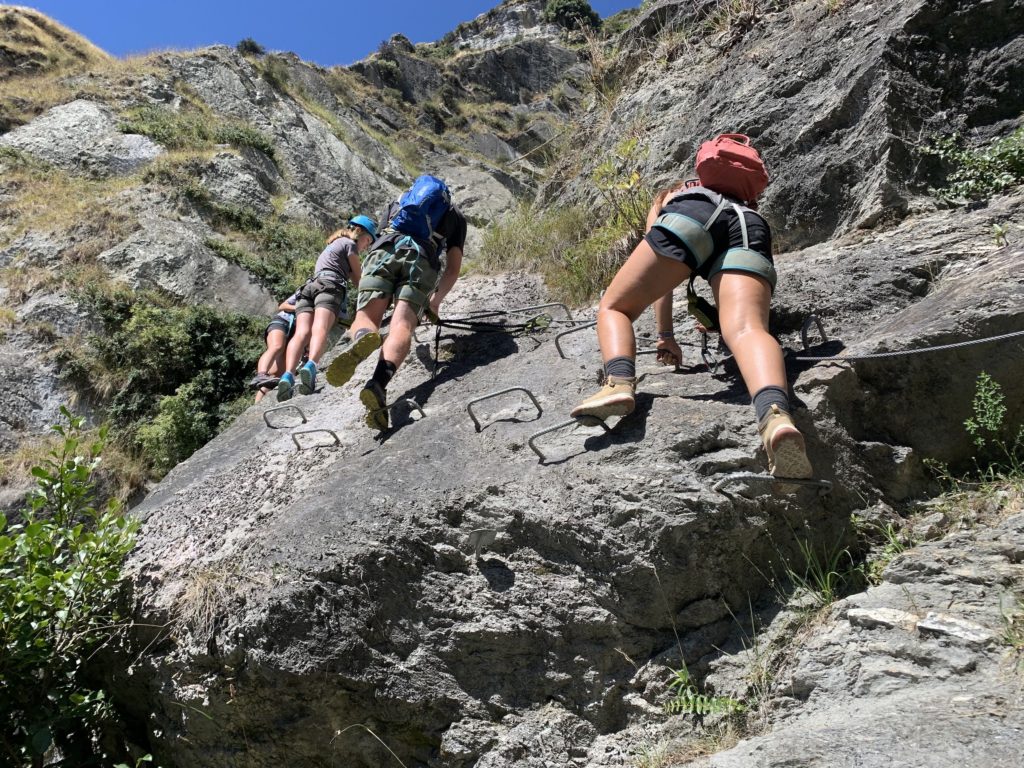
Safety and equipment
One of the main differences between normal hiking and doing a via ferrata is the equipment. (Since you’re climbing such steep cliffs, you obviously want to be attached to something in case you slip or fall.) The biggest benefit of doing a via ferrata hike over a regular mountain climb is the fact that you don’t need as much specialized equipment.
The two pieces of equipment we received were a helmet and a harness. The harness includes two big carabiners with an energy absorber and one shorter carabiner that you can use to comfortably lean back. A lot of the more intense via ferratas will provide climbing gloves as well.
The most important safety concept to remember is that you should always have at least two points of contact with the ground. When you’re climbing, those two points will be your two large carabiners on the steel ropes. On sections where your feet are firmly on the ground, you only need one carabiner to be clipped in.
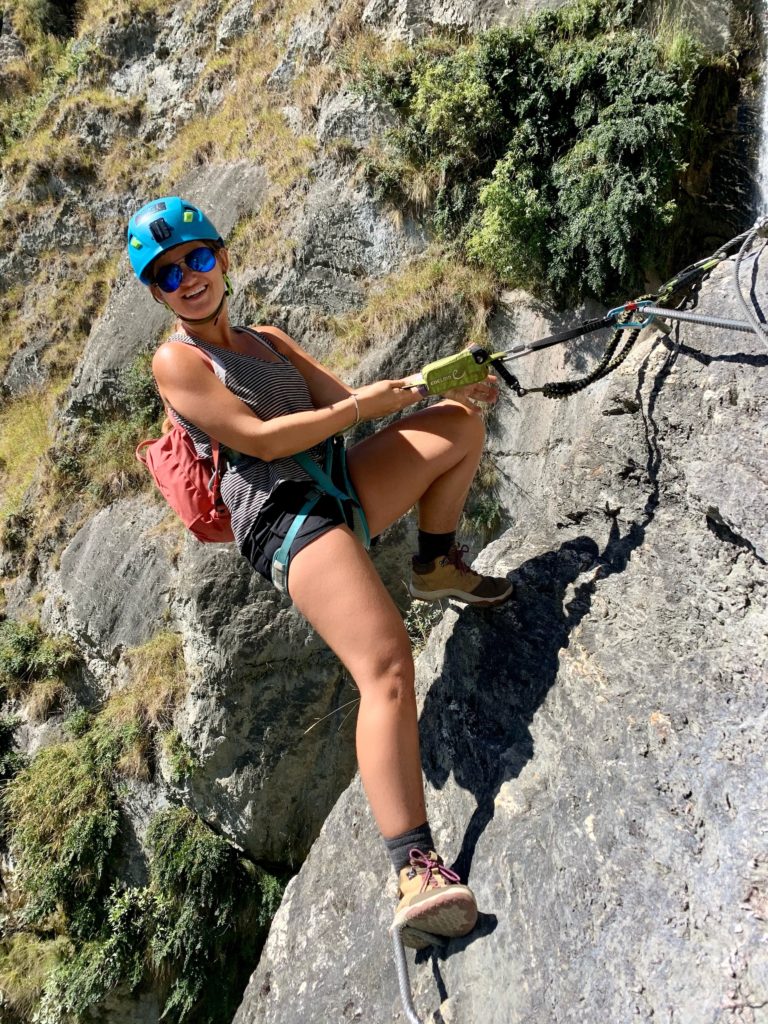
Wildwire via ferrata Wanaka
Wildwire via ferrata is one of two via ferratas in New Zealand (the other being in Queenstown). It holds the title of being the tallest waterfall via ferrata in the world.
There are two waterfalls (known as the Twin Falls) on the property. All of the hikes go up the left waterfall. From the parking lot, you can’t actually see the entire route that you’ll be climbing. The track goes up and then in deeper into a crevasse.
Wildwire via ferrata Wanaka offers three different climbing levels:
- Go Wild (150 m/492 ft): This is the shortest climb Wildwire offers. The roundtrip journey takes about 3 hours total. $199/per person
- Wild Thing (320 m/1049 ft): This level goes a bit farther up from level 1 and takes about 5 hours to complete. $299/per person
- Lord of the Rungs (450 m/1476 ft): This is the longest and highest climb. It takes 7 hours to complete and you get to fly down in a helicopter instead of walking! $599/per person


Start of the day
Our day started at 9 am. After parking the van and signing a waiver, the guides gave the whole group a brief rundown of via ferrata history and safety. They fitted us all in helmets and harnesses and explained how to properly clip on to the steel cables. There is also a small practice rock that everyone had to climb up and around to demonstrate that we could follow instructions.
Ben and I decided to do the middle level, Wild Thing. We had one guide and two other people in our group. Surprisingly, it looked like the most difficult climb (Lord of the Rungs) was the most popular that day.
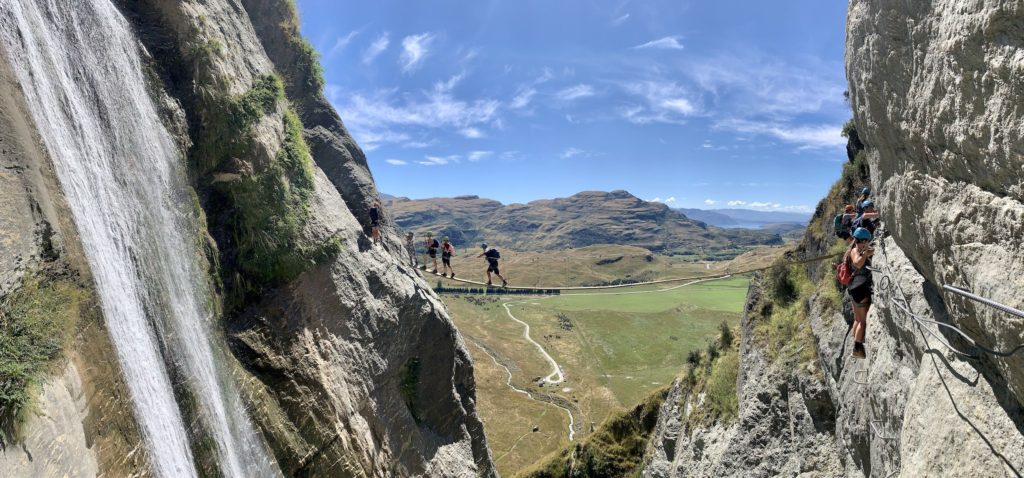
The climb
From the practice rock, you walk a few minutes towards the mountain before reaching your first clip-in spot. It starts off pretty easy, with mostly horizontal rungs and short ladders. As you gain elevation, however, the climb gets more vertical (and more difficult).
Some of my favorite parts were the bridge crossings. We crossed 3 swing bridges across the crevasse. On one of them, our guide let us clip on to the side and dangle off of the edge. So fun!
Being the lucky pair we are, Ben and I did this on a sweltering hot and sunny day. It felt like it was a million degrees outside. Fortunately, our guide offered us plenty of time to stop and reapply sunscreen or drink water. Once you get high enough up the track, there are actually a few places where you can dunk your head under the waterfall (thank god).
At the top of level 2, you’re also allowed to completely submerge yourself under the waterfall and take a dip in the pond. Everyone in levels 2 and 3 takes a break here for lunch. Once lunch was done, our group started the walk down to the bottom. The walk down takes about 15 minutes and is on a separate path from the via ferrata.
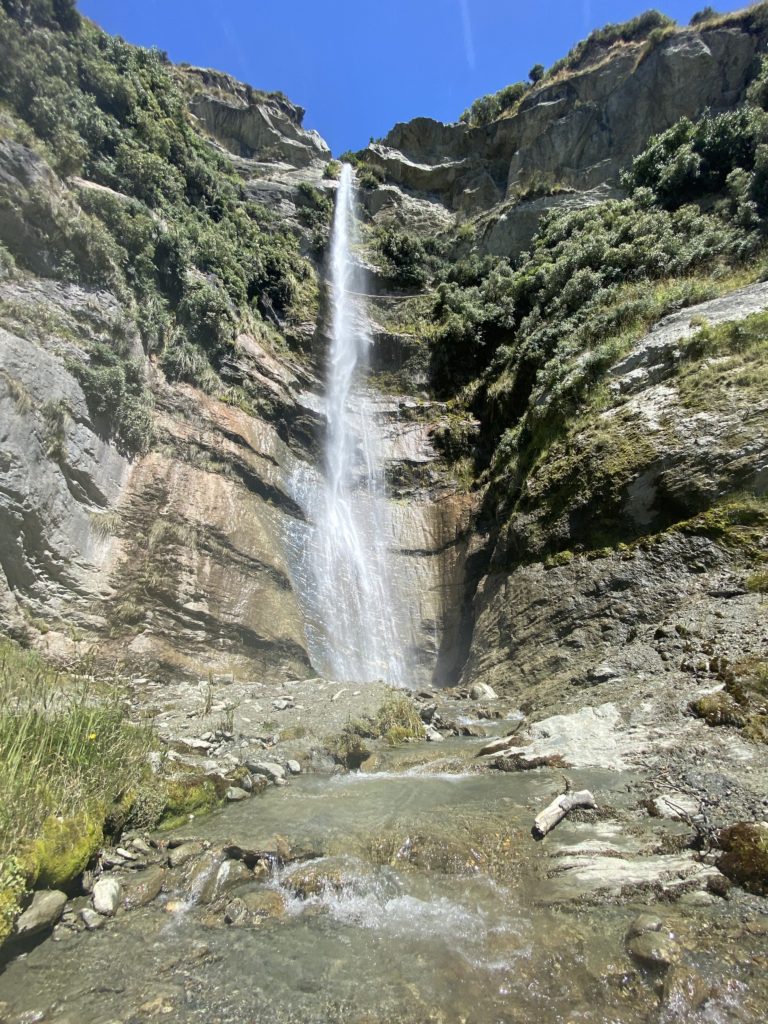
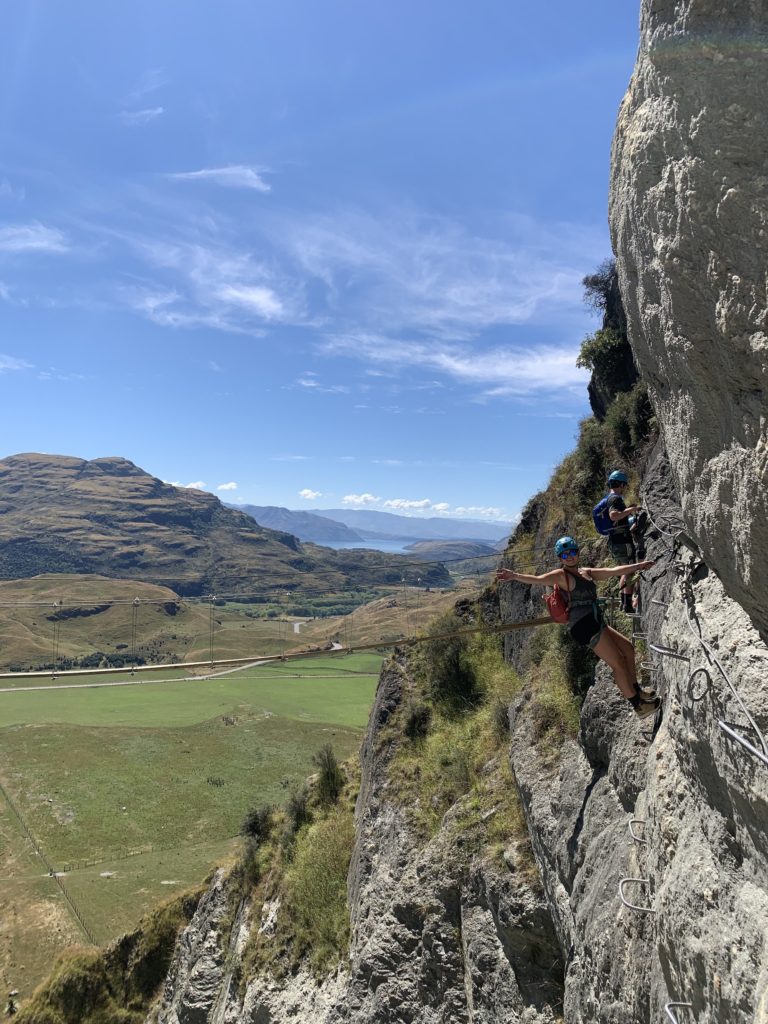
Final thoughts on Wildwire Via Ferrata Wanaka
I am so glad that we decided to do level 2. It offered just enough height and climbing time to be worth it without feeling like it was too much. After lunch, we saw the level 3 group starting to ascend some more ladders. Because it was so hot, I just thought about how happy I was to almost be done.
All in all, Wildwire via ferrata Wanaka was a wonderful experience. It made a normally steep and difficult climb extremely accessible to someone like me (who has no climbing experience). The views were great, our guides were awesome, and it definitely felt like I got a good workout in. I’d recommend this climb for anyone that is relatively fit and isn’t afraid of heights.

Book a tour in Wanaka
I hope this post on Wildwire via ferrata Wanaka was helpful! It definitely was a fun (and exhausting) day. Look out for more hiking posts coming soon!
xoxo Niki
Pin this post to save it for later!
